
In sight of the Gamsberg the IAS operates another observatory with several large telescopes on the area of Hakos Astrofarm. Observation conditions are almost as good as on top of the Gamsberg. In a double roll-off roof building are set up a 20“-Cassegrain telescope and a 20“- Newton astrograph as well as a 20”- Ritchey-Chrétien telescope in a 4.2m dome. A smaller 3m dome hosts an Alt 7AD mount, which can be combined with different telescopes. Another roll-off roof protects our C14 on a large fork mount. External piers, some with mounts can be equipped with own instruments.
Furthermore our new telescope is currently in a testing phase: a huge 80-cm-Newton in an azimut fork mount! It arrived in Namibia in January 2019 and was set up by an enthusiastic team in March. First observations show the great potential of the large aperture under Namibian skies!
Currently the mechanism to open the roll-off roof is missing, as soon as it is installed the telescope will be ready for usage of the IAS members. Stay tuned for updates!
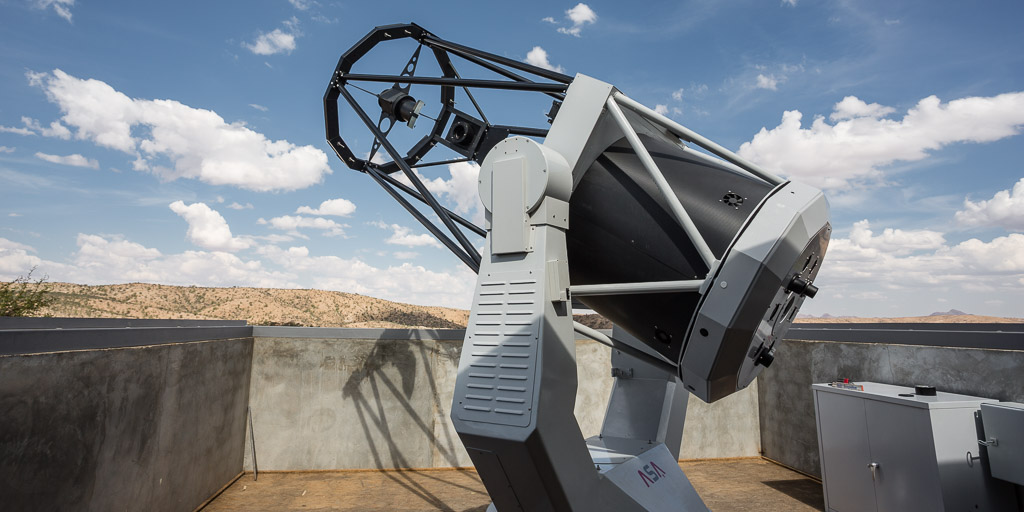
Currently the following telescopes are accessible by our members:
20" Cassegrain-Telescope

The 20" Cassegrain telescope (prime focus f/3 (1500 mm), secondary focus f/9 (4500 mm) from Astrooptik Philipp Keller sits on our massive (350 kg) german equatorial mount and is besides visual and photographic use in the secondary focus perfectly suitable for high resolution photography up to medium format in the prime focus.
The OTA is realized as truss tube with CFK-tubes to ensure a stable focal position over long time. Whilst typical Cassegrain telescopes consist from a parabolic primary mirror and a hyperbolic secondary mirror only and thus are useful for small fields of view only, our instrument is equipped with high quality correctors in primary and secondary focus. This enables the instrument to offer very large useful fields for high resolution photography with pinpoint stars even in the corners of large fields. The switch to the extreme fast prime focus requires just the easy removal of the secondary mirror.
20" Newtonian Astrograph
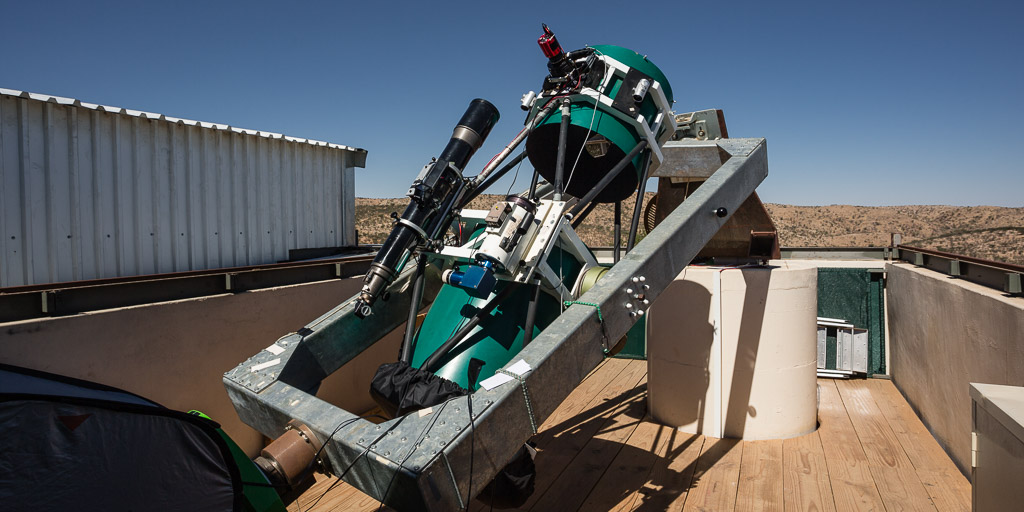
This telescope – the so called AK3 (Astro-Kamera 3) - has been designed and built by our member Carsten Jacobs. It is a newtonian telescope intended mainly for photographic use with 20“ aperture and a focal length of 1.888 mm (f/3.7). The 4” – Wynne corrector delivers a usable field of 60 mm diameter perfectly corrected and thus allows the use of all modern astro-cameras. An additional 0.73x reducer results in a focal length of 1.400 mm (f/2.8) and illuminates a field of 28 mm (APS-C). The astro-camera is installed in the western room of the Hakos observatory and mounted in a massive English frame mount.
20" Ritchey Chrétien (Alluna Optics)

This telescope has seen its first light in 2012. Besides excellent mirrors Alluna produces outstanding Ritchey Chrétien-telescopes. Thus we had an easy decision to select this scope as a successor for our 16“- Cassegrain. This RC offers an aperture of 20” with a focal length of 4.100 mm (f/8), which can be reduced to 3.000mm (f/6). The fully corrected field has a diameter of 65 resp. 60 mm, so that even large imagers can be used optimally. The scope is mounted rock solid on a massive German Equatorial Mount GM4000 HPS from 10Micron in our 4.2 m dome.
14" Schmidt-Cassegrain (C14)
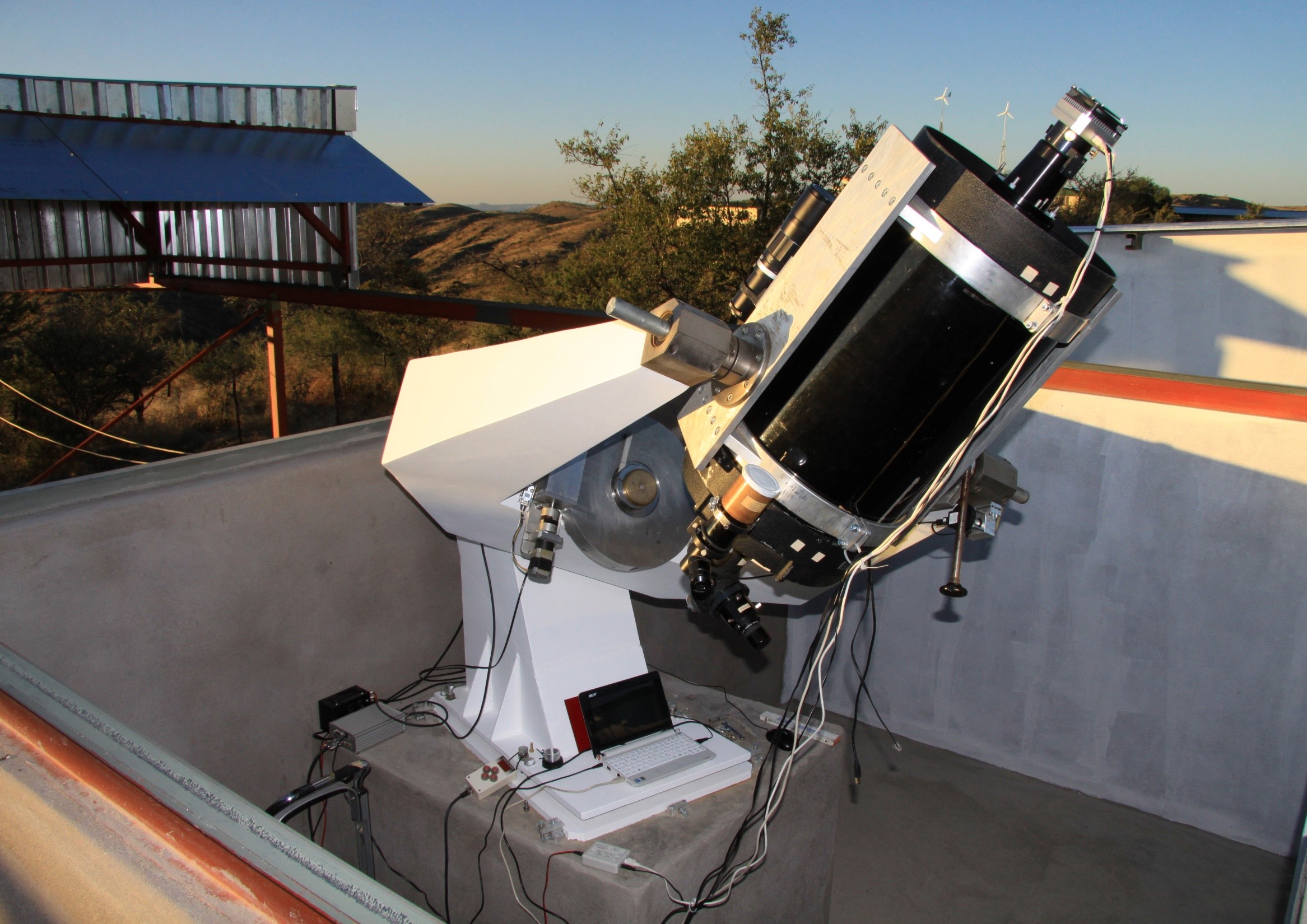
Who requires a longer focal length, likes to use the proven C14 from Celestron. With an Aperture of 14” (354 mm) and f/11 it is popular for planetary observations. But as well deep sky photographers like this telescope in combination with the Hyperstar corrector: In prime focus this results in a focal length of 675 mm only (f/1.9!) with a FOV of about 30 mm. Under Namibian skies this enables photographers to take extremely deep pictures.
Unfortunately the secondary mirror of the C14 has been scratched and damaged during the change of the regular to the Hyperstar configuration, so image quality was suffering. Thus the secondary mirror was disassembled at the end of the observing season 2018 and came home to Germany to get a new coating. After the repair it returned to Hakos. Installation and rough adjustment was done by Thomas Winterer in January, and fine collimation was done in May by Andreas Theobald. The optics are "as new" again and delivered razor-sharp images of the planets during our last trip, confirming Wolf Hartmann´s statement that it is an excellent optic in a very impressive manner.
All future users are requested to be very careful when changing between normal and Hyperstar configuration.
The C14 sits on a large self-made fork mount, which has found its home under its own roll-off roof. It is driven by an FS2 drive system and equipped with electronic encoders.
11" Schmidt-Cassegrain (C11)
The small brother of the C14 is a popular instrument beyond amateur astronomers. With an aperture of 11” (280 mm) and a focal length of 2.800 mm the C11 can still be called a handy scope. This is the reason, why it is often used on one of our external piers, mainly for visual observation.
Takahashi Epsilon 160
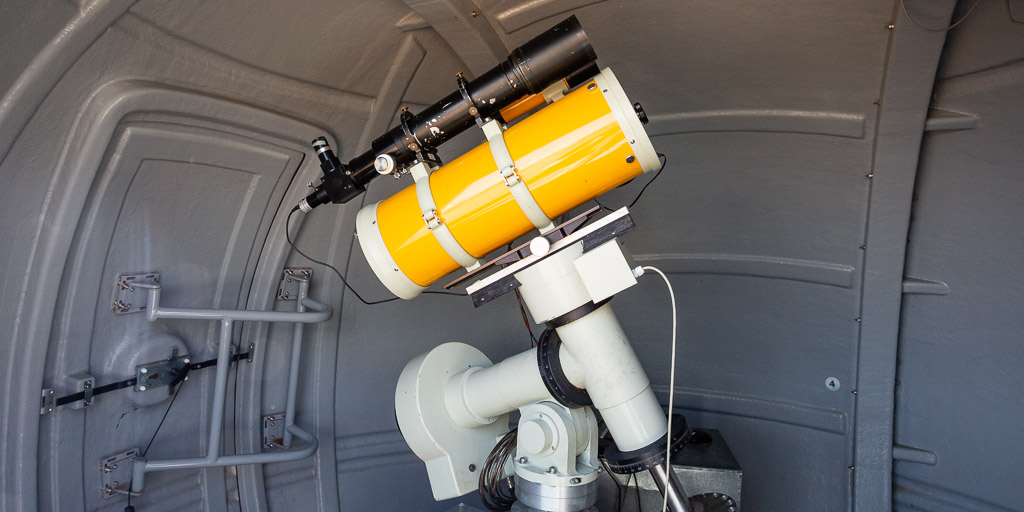
This instrument is a purebred astrograph with a design similar to a Newtonian scope with a coma-corrector. The primary mirror with 160mm diameter is not parabolic but hyperbolic and a permanently mounted 4 – lens corrector ensures pinpoint stars even in the corners of the 35mm format. Due to the short focal length of 530 mm and the resulting fast focal ratio of f/3.3 the “Tak” is predestined for the photography of large and dim objects.
TMB Apochromat 130/780 mm
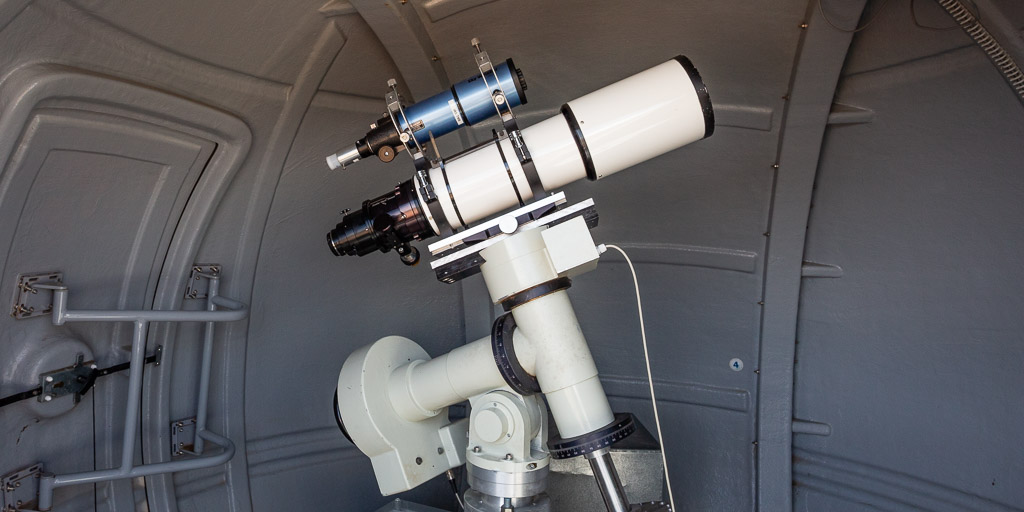
This instrument is not only an outstanding Apochromat for visual observations with small and high magnifications but as well a perfect f/6 Astrograph, which delivers pinpoint stars in the corners even with full frame imagers. This scope is typically being used on the newly installed Alt 7AD mount in the 3m dome, too.
Dobson Telescopes


For the visual observers the dobsonian scope with its 17.5“ aperture is ideally suited. Due to its relatively short focal length observations remain comfortable even near the zenith. The astro – photographers like to use this telescope for visual observations during longer exposure sequences.
Of course our members can bring their own scopes, which can be assembled on one of the external piers. On one of the external piers a Fornax mount is permanently installed.
The Hakos Observatory of the IAS bears the observatory code 221 of the Minor Planet Center, coordinates:
23° 14' 11" S, 16° 21' 42" E, 1852 m
The Hakos Astro Guest Farm is run by the Straube family. Hospitality is of high importance for them, astronomers and their families are perfectly looked after at Hakos.
The huge farm area offers many possibilities for walks through the Hakos – Mountains and for the observation of animals with mountain zebras, yellow baboons, diverse antelope’s kinds and numerous different birds.


